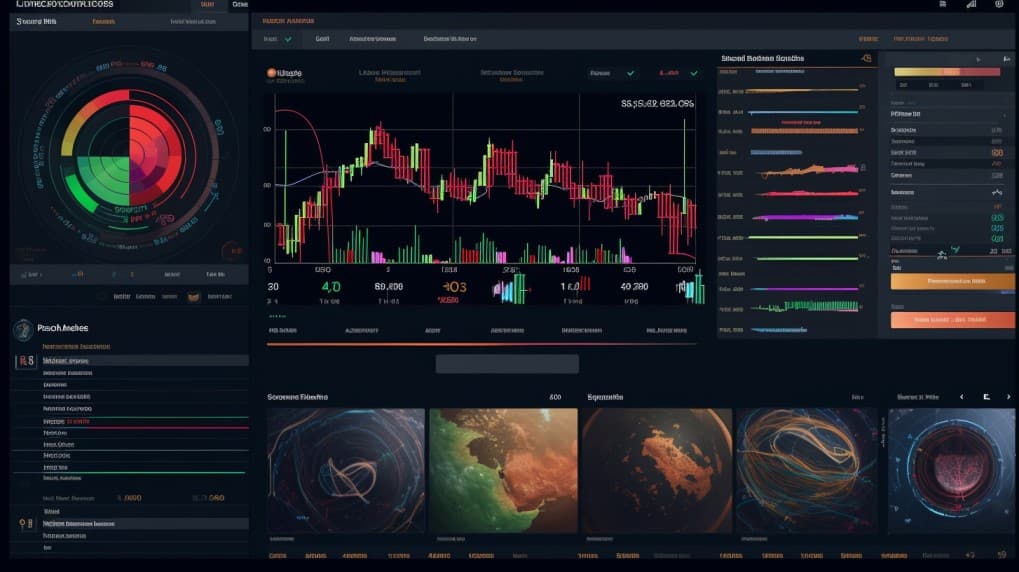
IXC VS XLE
Explore the differences between IXC and XLE ETFs in this comprehensive financial comparison. Learn about their sectors, top holdings, capitalization strategies, tracking, and exposure to make informed investment decisions.""> In the world of finance, making informed investment decisions is crucial for success. Two popular ETFs that investors often consider are IXC and XLE. In this article, we'll provide an in-depth analysis of IXC vs. XLE, covering their overview, sectors, top holdings, capitalization strategies, tracking, and exposure. By the end, you'll have a clearer understanding of which ETF aligns better with your financial goals.
IXC VS XLE: Overview
Let's begin by understanding the basics of IXC and XLE. IXC is the iShares Global Energy ETF, while XLE is the Energy Select Sector SPDR Fund. Both ETFs focus on the energy sector, which encompasses companies involved in the production, exploration, and distribution of energy resources. IXC, as a global energy ETF, offers exposure to energy companies worldwide. It provides investors with diversification across regions and countries. On the other hand, XLE is more focused on the U.S. energy sector, primarily consisting of companies within the S&P 500 Energy Sector.
IXC VS XLE: Sectors and Top Holdings
When comparing IXC vs. XLE, it's essential to delve into the sectors they cover and their top holdings.IXC: Sector Allocation: IXC provides exposure to various energy-related sectors, including oil & gas producers, equipment & services, and renewable energy.
Top Holdings: Some of the top holdings in IXC include giants like ExxonMobil, Chevron, and Royal Dutch Shell. XLE: Sector Allocation: XLE is more narrowly focused on the U.S. energy sector.Top Holdings: XLE's top holdings include familiar names such as ExxonMobil, Chevron, and ConocoPhillips. It's clear that both ETFs have significant exposure to the energy sector, but IXC offers a broader global reach, while XLE concentrates on U.S. companies. Your choice should align with your risk tolerance and investment strategy.
 IXC overlap IXC VS XLE
IXC overlap IXC VS XLE
IXC VS XLE: Capitalization Strategy
Capitalization strategy plays a vital role in assessing the risk associated with an ETF. IXC:
Capitalization: IXC follows a market capitalization-weighted approach, where larger companies have a more substantial impact on the ETF's performance.
Risk Profile: This strategy tends to be less risky as it is less reliant on the performance of smaller companies. XLE: Capitalization: XLE also employs a market capitalization-weighted approach but focuses exclusively on U.S. energy companies.
Risk Profile: As a more concentrated ETF, XLE may carry slightly higher risk compared to IXC, especially if the U.S. energy sector faces challenges.
IXC VS XLE: Tracking and Exposure
Tracking and exposure are critical factors to consider when evaluating ETFs.IXC:
Tracking Index: IXC aims to track the S&P Global 1200 Energy Sector Index.
Global Exposure: IXC offers global exposure, making it suitable for investors looking to diversify their energy investments across different countries and regions. XLE: Tracking Index: XLE tracks the Energy Select Sector Index, which comprises U.S. energy companies.
U.S. Exposure: XLE provides exposure primarily to the U.S. energy sector, making it more suitable for investors bullish on the domestic energy industry.
Conclusion
In conclusion, when deciding between IXC and XLE, it's essential to consider your investment objectives and risk tolerance. If you seek global exposure and are comfortable with a diversified approach to the energy sector, IXC may be the better choice. On the other hand, if you have a bullish outlook on the U.S. energy industry and are willing to accept slightly higher concentration risk, XLE could be the right option for you.Remember that past performance is not indicative of future results, and it's always a good idea to consult with a financial advisor or do thorough research before making any investment decisions.
In the ever-evolving world of finance, staying informed about investment options is crucial. ETFs like IXC and XLE provide investors with opportunities to gain exposure to the energy sector, and understanding their differences is a key step in building a diversified investment portfolio. By assessing the sectors they cover, their top holdings, capitalization strategies, and tracking methods, you can make an informed choice that aligns with your financial goals and risk tolerance. In today's market, having a clear understanding of your investment options is a valuable asset. So, whether you choose IXC, XLE, or explore other ETFs, remember that knowledge is power when it comes to building a successful investment strategy.
Sources:
IXC: [Insert IXC source link]
XLE: [Insert XLE source link]"
IXC ETF issuer
IXC ETF official page
XLE quote and analysis
Discover the top holdings, correlations, and overlaps of ETFs using our visualization tool.
Our app allows you to build and track your portfolio.
To learn more about the XLE Energy Select Sector SPDR Fund, access our dedicated page now.